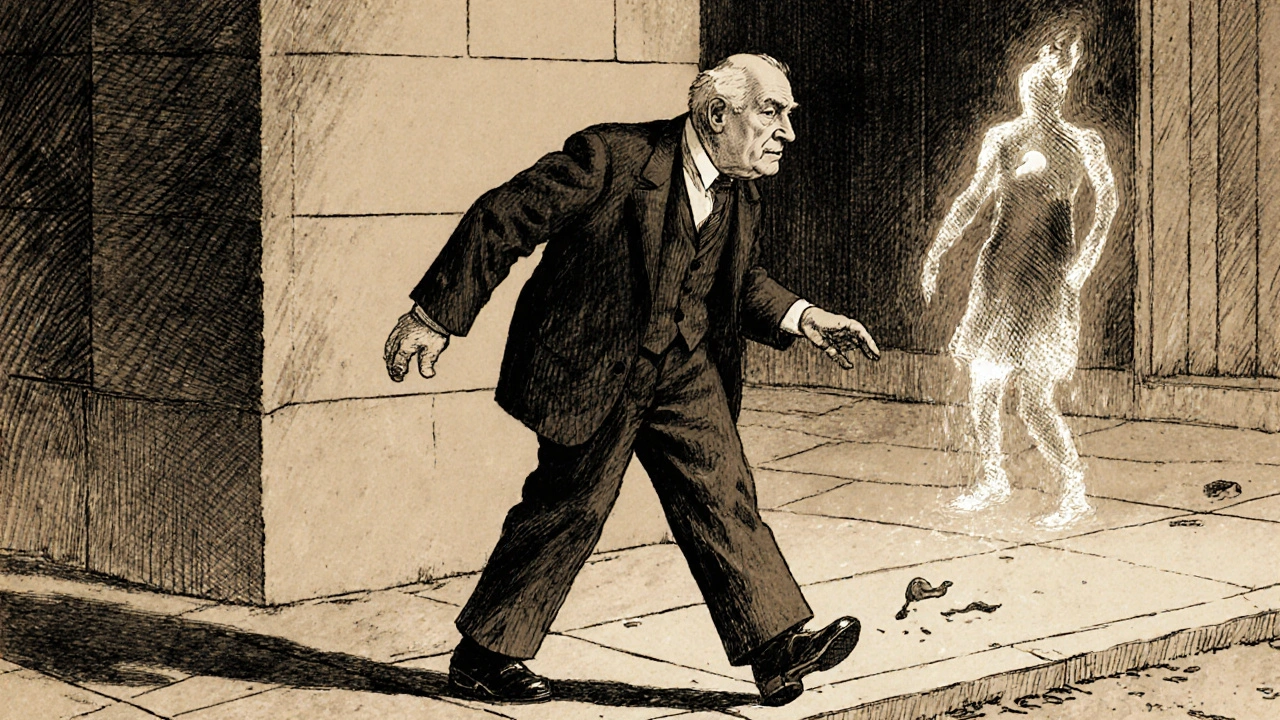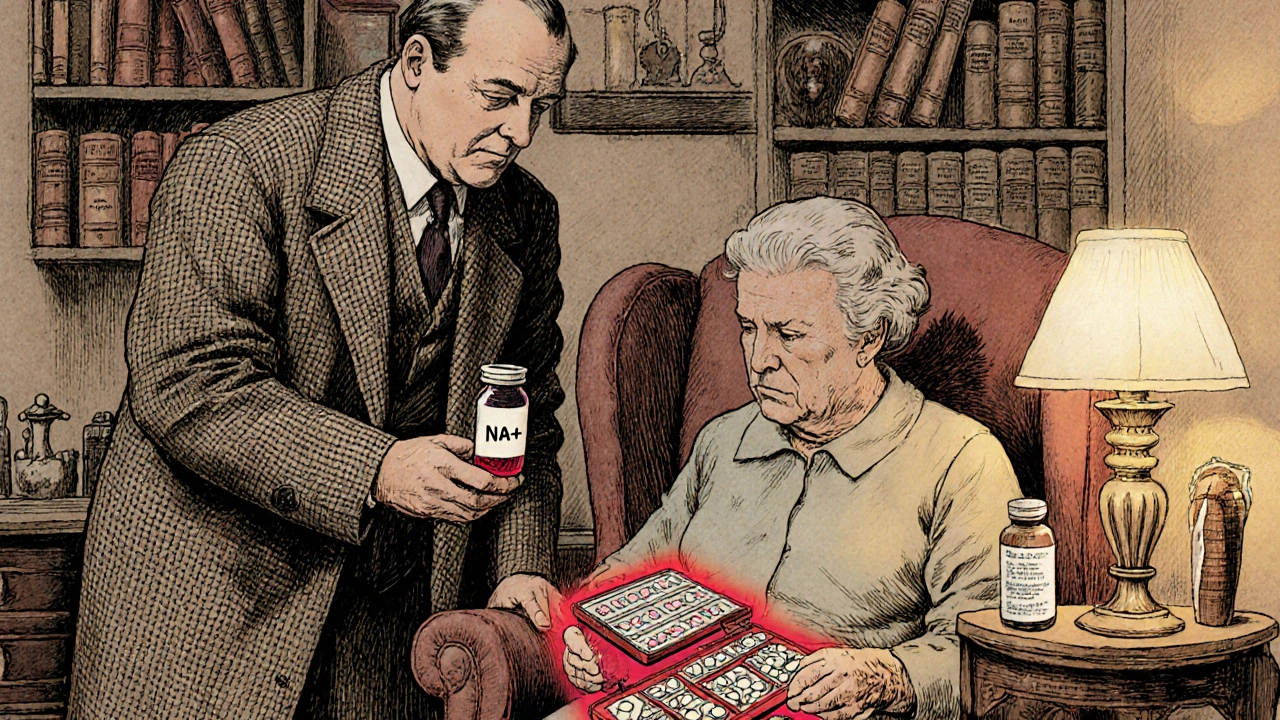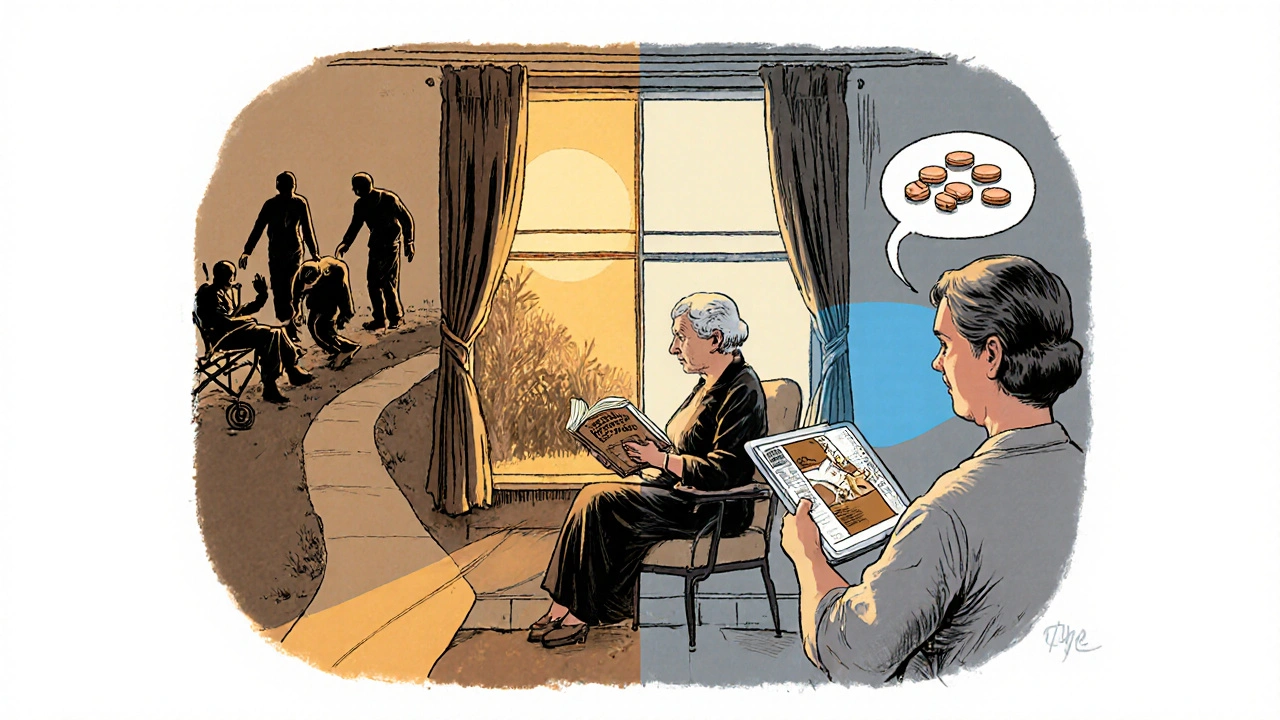Older Adults on SSRIs: How to Prevent Hyponatremia and Falls
 Nov, 3 2025
Nov, 3 2025
SSRI Hyponatremia Risk Calculator
Risk Assessment
Risk Results
Risk Factors Contributing
Why SSRIs Can Be Dangerous for Older Adults
Many older adults take SSRIs to manage depression or anxiety. These medications work well for mood, but they come with hidden risks - especially for people over 65. One of the most serious dangers is hyponatremia, a condition where blood sodium drops too low. It’s not rare. About 6 out of every 100 older adults on SSRIs develop it. And it doesn’t always show up with obvious symptoms. Often, it just makes someone feel dizzy, weak, or a little confused. That’s enough to send them tumbling.
Hyponatremia happens because SSRIs mess with a hormone called ADH. Normally, your kidneys balance water and salt. But when SSRIs trigger too much ADH, your body holds onto too much water. That dilutes the sodium in your blood. Older adults are more vulnerable because their kidneys don’t work as well, their bodies have less water to begin with, and their hormones don’t respond like they used to. It’s not a matter of taking too much medicine - even standard doses can cause this.
Who’s at Highest Risk?
Not every older person on an SSRI will get hyponatremia. But some are much more likely. The biggest red flags:
- Low starting sodium levels - under 140 mmol/L
- Low body weight - BMI under 25
- Taking a thiazide diuretic (like hydrochlorothiazide) at the same time
- Being female
The combination of an SSRI and a thiazide diuretic is especially dangerous. Studies show this pairing increases hyponatremia risk by over 20%. That’s not a small bump. It’s a red light. And it’s not always obvious to doctors. Many older adults take diuretics for high blood pressure or swelling. They may not realize the combo is risky.
Some SSRIs are riskier than others. Fluoxetine (Prozac) has the highest rate of hyponatremia among this class. Venlafaxine (Effexor), though technically an SNRI, is even worse. If you’re starting an antidepressant and you’re over 65, ask: Is there a safer option?
How Hyponatremia Leads to Falls
Falls are the leading cause of injury and death in older adults. And hyponatremia is a silent driver. When sodium drops, brain cells swell. That causes dizziness, unsteady walking, confusion, and muscle weakness. These aren’t dramatic symptoms like seizures - they’re subtle. Someone might just say they feel "off" or that their legs feel heavy. They might stumble on level ground. They might get up from a chair and wobble.
There’s no exact number saying "X% of falls are caused by hyponatremia," but the link is clear. Emergency rooms see it all the time. An 80-year-old falls, breaks a hip, and the first thing doctors check is sodium. More often than not, it’s low. And the only new thing in their life? A new antidepressant, started just three weeks ago.
That’s why doctors now say: if an older adult starts falling without a clear reason, check their sodium. It’s a simple blood test. And it could prevent a hospital stay, a surgery, or worse.

What Doctors Should Do - and Often Don’t
Guidelines have been clear for years: Check sodium before starting an SSRI. Check it again at two weeks. That’s the standard. But in real life, it doesn’t always happen.
A 2023 study found that even when hospitals had policies for sodium testing, only about half of older patients actually got tested. Why? Time. Cost. Lack of follow-up systems. Busy clinics don’t always track lab results. A test ordered on Monday might not be reviewed until Friday - by then, sodium could have dropped dangerously low.
And here’s the contradiction: Some studies say checking sodium doesn’t reduce hospitalizations. But that doesn’t mean testing is useless. It means we’re missing the next step. Finding low sodium isn’t enough. You need a plan: stop the drug, limit fluids, switch to a safer antidepressant. Without that, testing is just paperwork.
At Johns Hopkins Bayview, a program that made sodium testing mandatory, added follow-up calls, and trained staff to spot early symptoms cut hyponatremia-related ER visits by 22%. It wasn’t magic. It was systems.
Safer Alternatives to SSRIs
If you’re over 65 and worried about hyponatremia, ask: Is there a different antidepressant that works just as well - without this risk?
Mirtazapine (Remeron) is the top alternative. It doesn’t affect ADH. It doesn’t raise hyponatremia risk. It’s sedating, which can help with sleep, and it’s often effective for depression with anxiety. It’s not perfect - it can cause weight gain - but for many older adults, it’s safer.
Bupropion (Wellbutrin) is another option. It doesn’t raise serotonin like SSRIs do, so it doesn’t trigger SIADH. It’s less likely to cause drowsiness, but it can increase anxiety in some people. It’s also not as strong for treating severe depression.
Psychotherapy, especially cognitive behavioral therapy (CBT), is effective for mild to moderate depression in older adults. It doesn’t come with any chemical side effects. But access is a problem. Many older people can’t get to appointments. Telehealth helps, but not everyone can use it.
The American Geriatrics Society now lists SSRIs as potentially inappropriate for older adults - especially those with low sodium, kidney issues, or a history of falls. That’s a strong warning. It doesn’t mean never use them. But it means: think twice. Choose wisely.

What You Can Do - Even If You’re Not a Doctor
If you or a loved one is on an SSRI, here’s what matters:
- Ask for a baseline sodium test before starting the medication.
- Ask for a repeat test two weeks after starting or after any dose increase.
- Review all medications with your pharmacist. Is there a diuretic? A blood pressure pill? A water pill? These could be the hidden danger.
- Watch for subtle signs: stumbling on flat ground, feeling unusually tired, confusion that comes and goes, nausea without stomach pain.
- If you notice these, don’t wait. Call your doctor. Say: "I’m on an SSRI. Could this be low sodium?"
Don’t stop the medication on your own. But don’t ignore the signs either. Hyponatremia can go from mild to life-threatening in days. Early action saves lives.
The Bigger Picture
More older adults are taking SSRIs than ever. Prescriptions have jumped 34% since 2015. That’s good - depression is under-treated in this age group. But the cost is rising too. Hyponatremia-related hospitalizations in the U.S. cost over $1.2 billion a year. Many of these are preventable.
New tools are emerging. Hospitals are using AI systems that flag high-risk combinations - like an SSRI plus a diuretic - and automatically remind doctors to order sodium tests. One system reduced risky prescriptions by nearly 20% in just six months.
But technology alone won’t fix this. We need better communication between doctors, pharmacists, and families. We need to stop treating depression in isolation. We need to see the whole person: their kidneys, their balance, their other meds, their risk of falling.
For older adults, the goal isn’t just to feel better emotionally. It’s to stay safe, strong, and independent. Sometimes, the best antidepressant isn’t the one that works fastest. It’s the one that doesn’t make you fall.
When to Call for Help
If someone on an SSRI has:
- Sudden confusion or memory loss
- Unexplained falls or dizziness
- Severe fatigue or muscle weakness
- Nausea, headache, or vomiting without illness
- get a sodium test immediately. Don’t wait for a scheduled appointment. Call the doctor, go to urgent care, or head to the ER. This isn’t a "wait and see" situation. It’s a medical alert.

Alex Harrison
November 4, 2025 AT 11:50Jay Wallace
November 5, 2025 AT 09:06Alyssa Fisher
November 5, 2025 AT 14:15Alyssa Salazar
November 7, 2025 AT 07:21Beth Banham
November 8, 2025 AT 20:37Brierly Davis
November 10, 2025 AT 12:01Amber O'Sullivan
November 11, 2025 AT 04:01